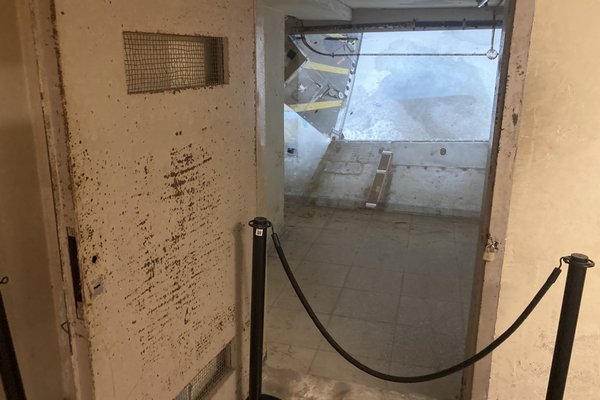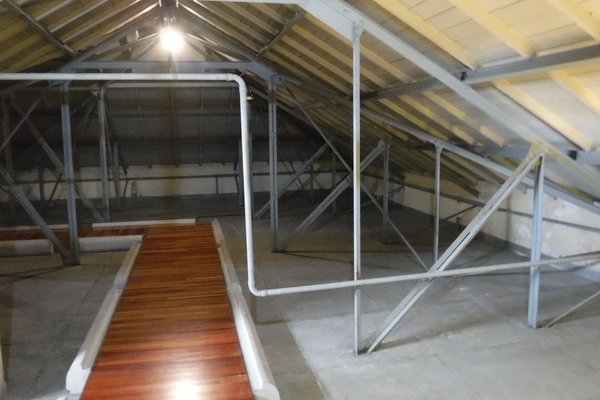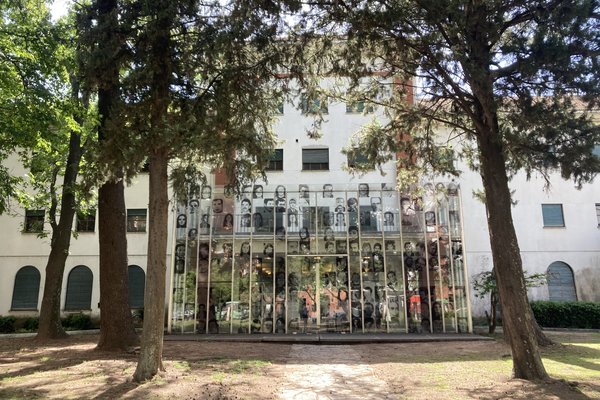Argentina
ESMA Site Museum
The ESMA Museum and Site of Memory - Former Clandestine Centre of Detention, Torture and Extermination represents the illegal oppression of opposition executed by the dictatorships of Latin America in the 1970s-1980s.
The 'Clandestine Centre' was located at the Officer's Quarters of the Argentine Navy in Buenos Aires. More than 5,000 people were kidnapped, tortured, and murdered here, and further atrocities were committed by its officers and subordinates against political left- and communist-oriented opposition members.
Community Perspective: Joel speaks of a "harrowing" museum with a strong focus on survivors' testimony, though overall it is very Argentina-specific. The museum is easy to reach within Buenos Aires by bus or Uber.
Site Info
Official Information
- Full Name
- ESMA Museum and Site of Memory – Former Clandestine Center of Detention, Torture and Extermination (ID: 1681)
- Country
- Argentina
- Status
-
Inscribed 2023
Site history
History of ESMA Site Museum
- 2023: Inscribed
- Inscribed
- Type
- Cultural
- Criteria
- vi
Links
- UNESCO
- whc.unesco.org
- Official
-
- museositioesma.gob.ar — Museo ESMA
All Links
UNESCO.org
- whc.unesco.org — whc.unesco.org/
Official Website
- museositioesma.gob.ar — Museo ESMA
Community Information
- Community Category
- Human activity: Sites of Memory
Travel Information
Recent Connections
-
Perfect Inscriptions
2023 -
Memory of the World
"The archives related to events that oc… -
Cold War
"Increasing political instability and a…
Connections of ESMA Site Museum
- Geography
-
-
Located in a Capital City
Buenos Aires (capital of Argentina)
-
- History
-
-
Cold War
"Increasing political instability and armed actions by revolutionary extremist organisations, within the global context of the Cold War, instilled in society the idea that Argentina was threatened by Marxism and extreme-left Peronism." (AB ev)
-
- World Heritage Process
- Human Activity
-
-
Memories of recent conflicts
Added as a WHS in 2023 after the lifting of the moratorium on registering sites of memory. -
Thanatourist destination
-
- Constructions
-
-
Prison
"the Argentine Navy’s principal secret detention centre for holding captive disappeared persons who had been abducted in Buenos Aires." (AB ev)
-
- WHS on Other Lists
-
-
Memory of the World
"The archives related to events that occurred in Argentina and ESMA in 1976-1983 have been included on the Register of the World’s Memory in 2007." (AB ev) -
International Coalition of Sites of Conscience
-
- Timeline
-
-
Built in the 20th century
"During the civil-military dictatorship (1976-1983), the Officers' Quarters building at ESMA ... was the Argentine Navy’s principal secret detention centre" (AB ev)
-
News
No news.
Recent Visitors
Visitors of ESMA Site Museum
- Alejandro Lau
- Andrew0181
- Anne
- Artsybrea
- Atila Ege
- Bill Maurmann
- Carlos Sotelo
- Cezar Grozavu
- Christoph
- Colossus
- ctravel
- Cyberczar
- del
- DjhMck
- DouglasR
- Els Slots
- Frédéric M
- George Gdanski
- Grendel Gongan
- Harry Mitsidis
- hotpickle
- Hughes1920
- Jacob Choi
- Jan Zimmermann
- Jawnbeary
- Joel on the Road
- Karito Vies
- Kbecq
- kiank37
- Loic Pedras
- Lucio
- Lukasz Palczewski
- Maciej Gil
- Nihal Ege
- Philipp Peterer
- Rachel Perkins
- Shandos Cleaver
- Simonf
- Stanislaw Warwas
- Thomas Buechler
- Thomas van der Walt
- Tim Allen
- triath
- Walter
- Xiquinho Silva
- zfish
- Zoë Sheng
Community Reviews
Show full reviews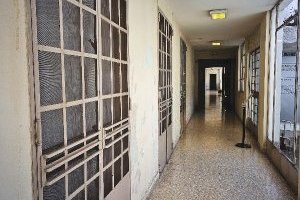
Frederic and Joel covered the site pretty well, so I will try to add a few information from my side as the first reviewer after that visited the site after the inscription.
Important to mention is, that the Escuela Superior de Mecánica de la Armada (ESMA) is a pretty big and interesting campus, that includes five accessible buildings, many none accessible buildings that are still used today, old watch towers and also one of the planes that were used to drop dissident into Rio Plata. But only the Officers Quarters Building at the very corner of the campus is core zone. The rest is buffer zone. I highly recommend to visit the buffer zone as well, as it is very interesting and shows additional testimony of the victims. Our Uber dropped us off in front of the building, but unfortunately the entrance to the campus is almost at the other corner of Av. Del Libertador, which was a 400 meters walk not appreciated by my family.
Entry is free, but children (below 16) are not allowed to enter the inscribed building. Out of the four levels, only two could actually be visited. The officers quarters on level 2 and 3 were closed and I am not sure if it is planned to make them accessible (again). The relatively small number of accessible rooms makes this a relatively short visit. You can however spend lots of time in there watching all the testimony videos that are shown in the …
Keep reading 0 comments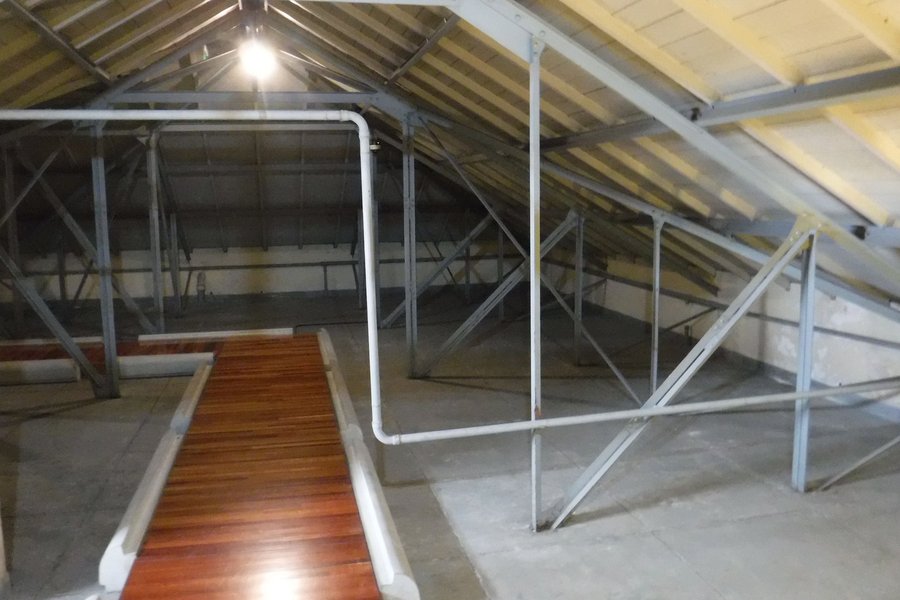
Joel's review of this excellent and disturbing museum is itself excellent (but fortunately not very disturbing!). He describes the site itself and its history exceedingly well, and I even share his opinion about the site's outstanding universal value. So I'll just add a few details about my visit.
I visited ESMA in March 2022, before its inscription on the World Heritage List. Like Joel, I was struck by the human side of the museum, with its emphasis on the testimonies of victims and survivors, the former far outnumbering the latter. The museum boasts 17 permanent exhibition halls, all recounting the events that took place there. The entrance portal is remarkable, with its windows covered with the portraits of those who died. A similar fresco can be found in the Escuela de Mecanica de la Armada (buffer zone).
The first room in which I took photos was the Capucha, on the third floor (banner picture above). This is where prisoners were held in cramped quarters. The description of the conditions of detention is bloodcurdling, particularly the details about the pregnant women held at ESMA whose children were handed over to members of the army who tortured the mother. This area also provides access to the Capuchita, the fourth-floor torture and solitary confinement room. The next room, the Pañol, describes the theft, fraud, and forgery committed by ESMA officers. They operated a well-honed machine of terror. Prisoners even worked on falsifying documents to further the propaganda of the totalitarian regime and the …
Keep reading 0 comments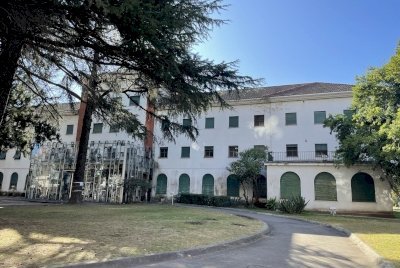
ESMA, the ESpacio MemoriA y Derechos Humanos (Human Rights and Memorial Space), belongs to a difficult category of Site. Like Auschwitz, Hiroshima, and the proposed sites of genocide memorial in Rwanda and WW1 memorials in Belgium/France, ESMA is dedicated to preserving the memory of a significant 20th century crime.
Located on the campus of the Naval Warfare School in leafy northern Buenos Aires, the main part of the museum is in the former Officer's Quarters, an imposing four-storey edifice in one corner of the campus. It's here that during the military dictatorship of 1976-1983, both political prisoners and innocent civilians were taken, tortured, beaten, confined to miniscule cells, and often, ultimately "transferred" (murdered, though the act was done elsewhere). Incredibly, while this was happening, the rest of the campus continued to operate as normal, with the majority of naval cadets unaware of what was taking place just a few hundred metres away. Almost literally hidden in plain sight.
As a child of the early 80s, and not particularly well versed in Argentine history, I didn't know much about the military dictatorship era other than "it existed". So the extremely well-organised and put together museum was genuinely eye-opening, and very harrowing. I was astounded to read accounts from survivors, and to discover that despite being confined to a blacked-out building, most captives were completely aware of where they were being held.
The busy six-lane boulevard Avenida del Libertador runs directly past with its ceaseless rumble of traffic, aircraft …
Keep reading 0 comments
